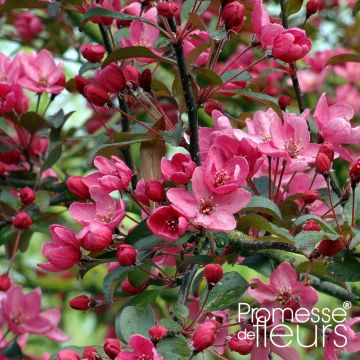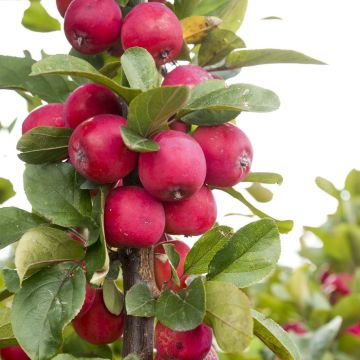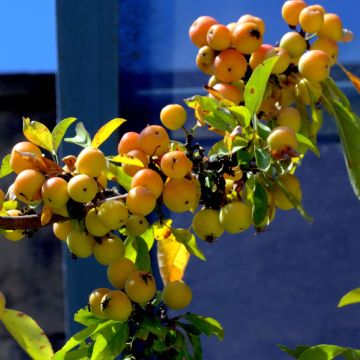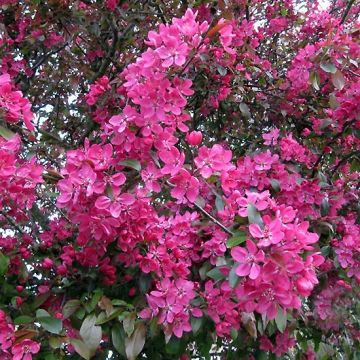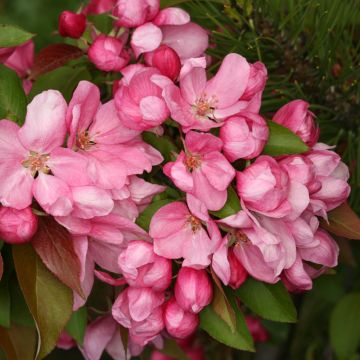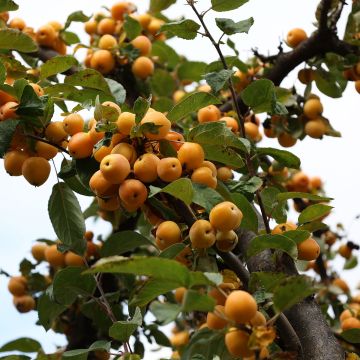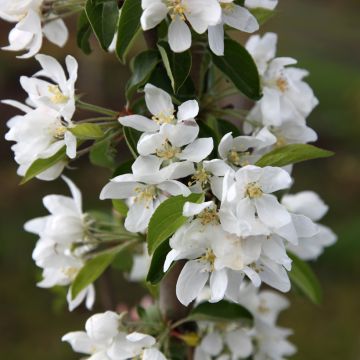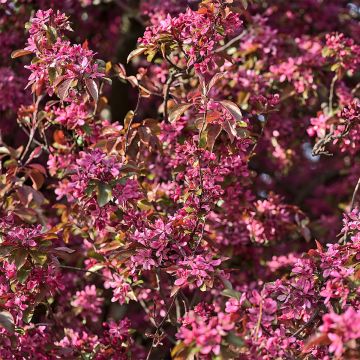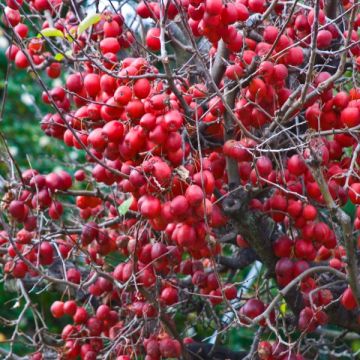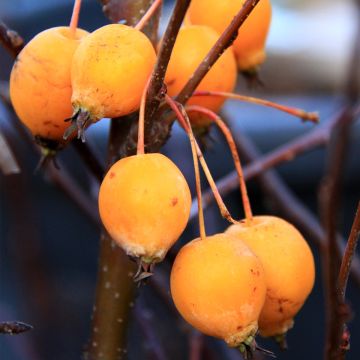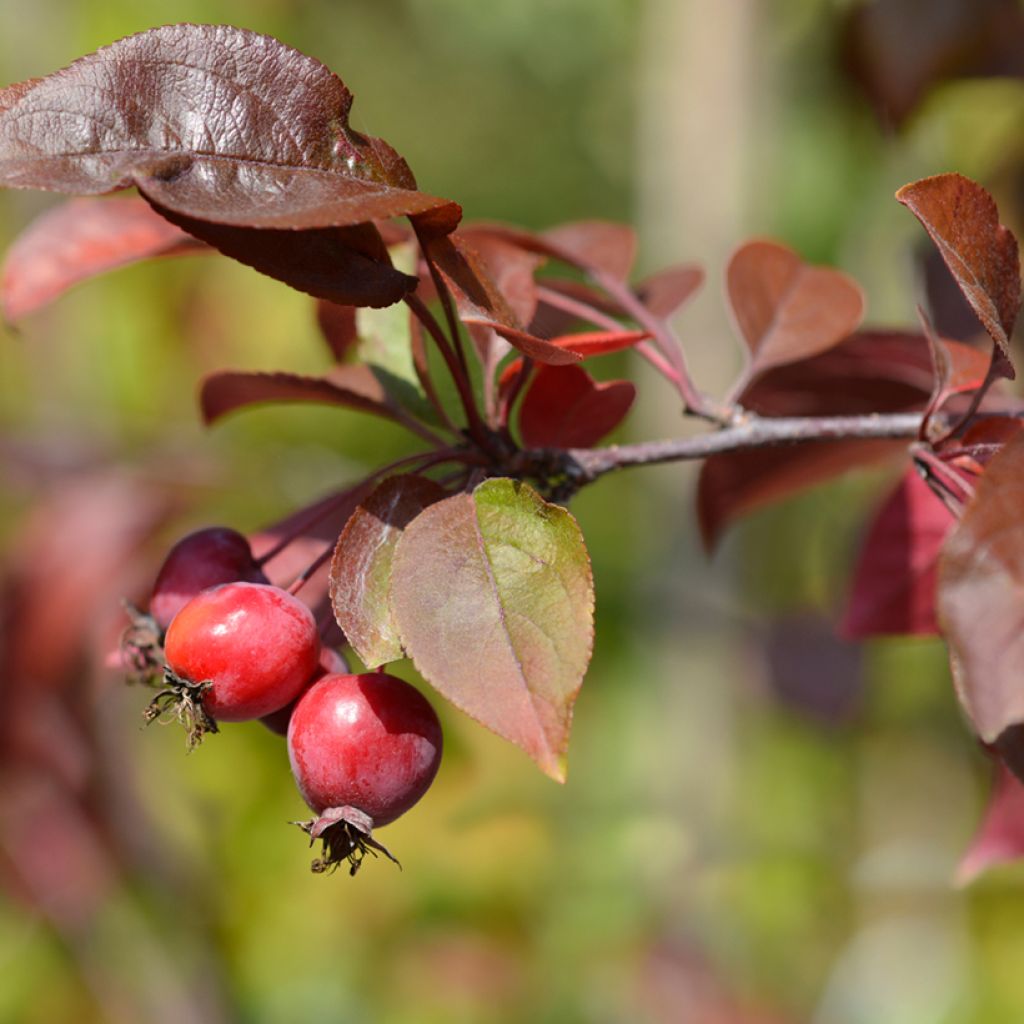

Malus purpurea Eleyi - Purple Crabapple
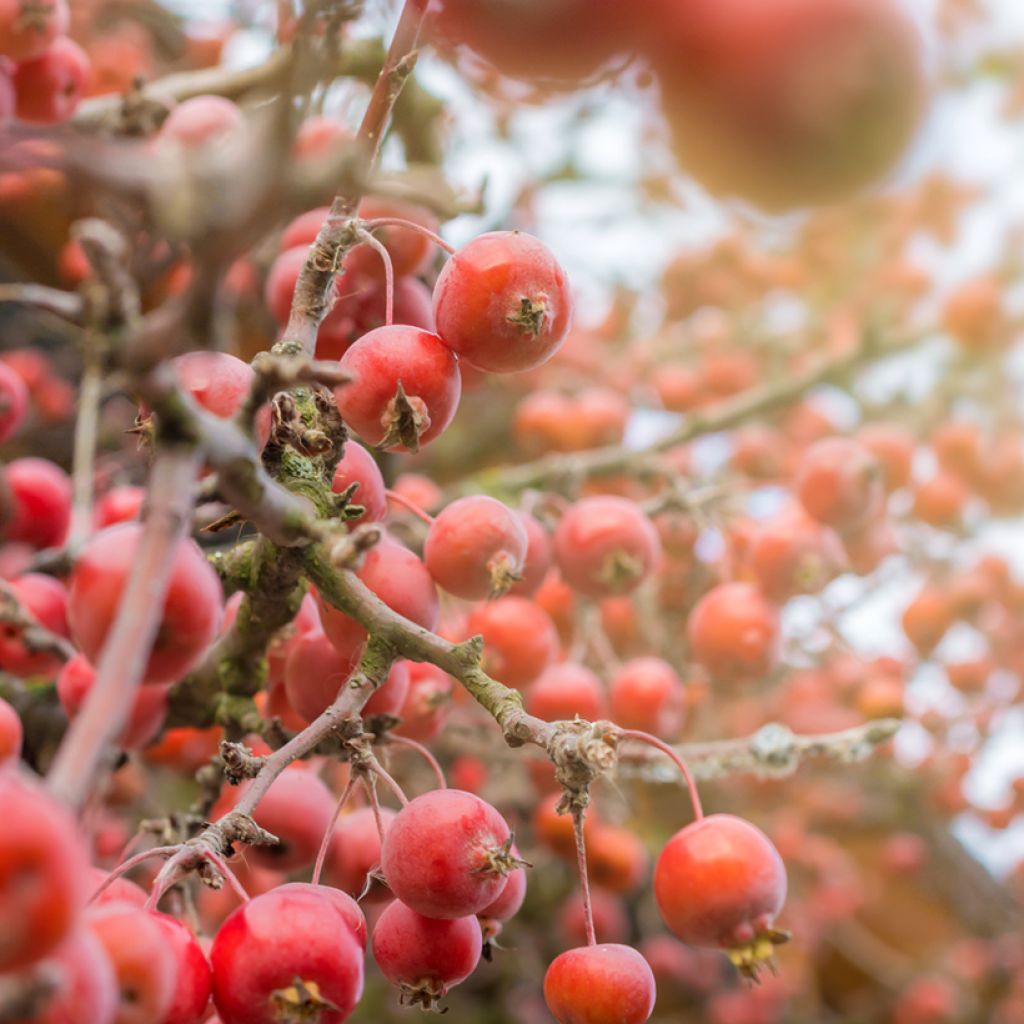

Malus purpurea Eleyi - Purple Crabapple
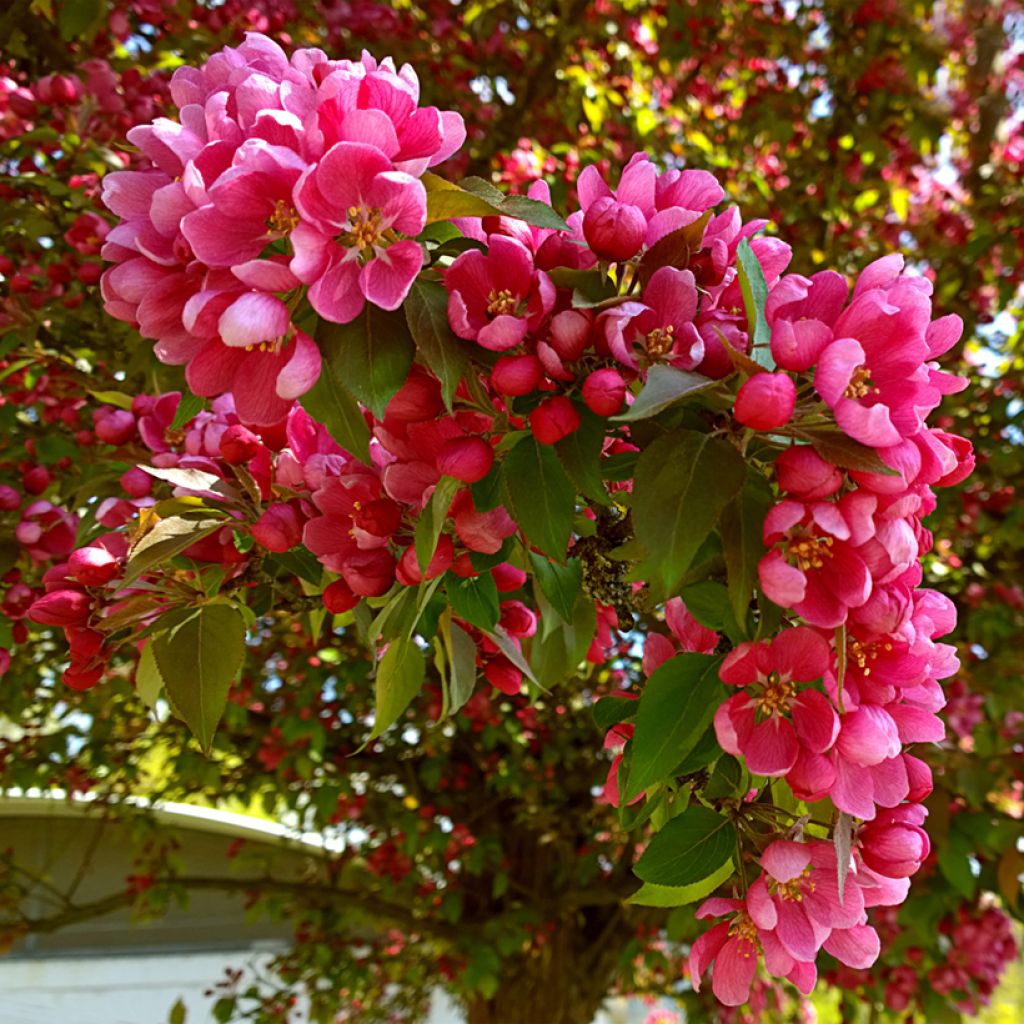

Malus purpurea Eleyi - Purple Crabapple
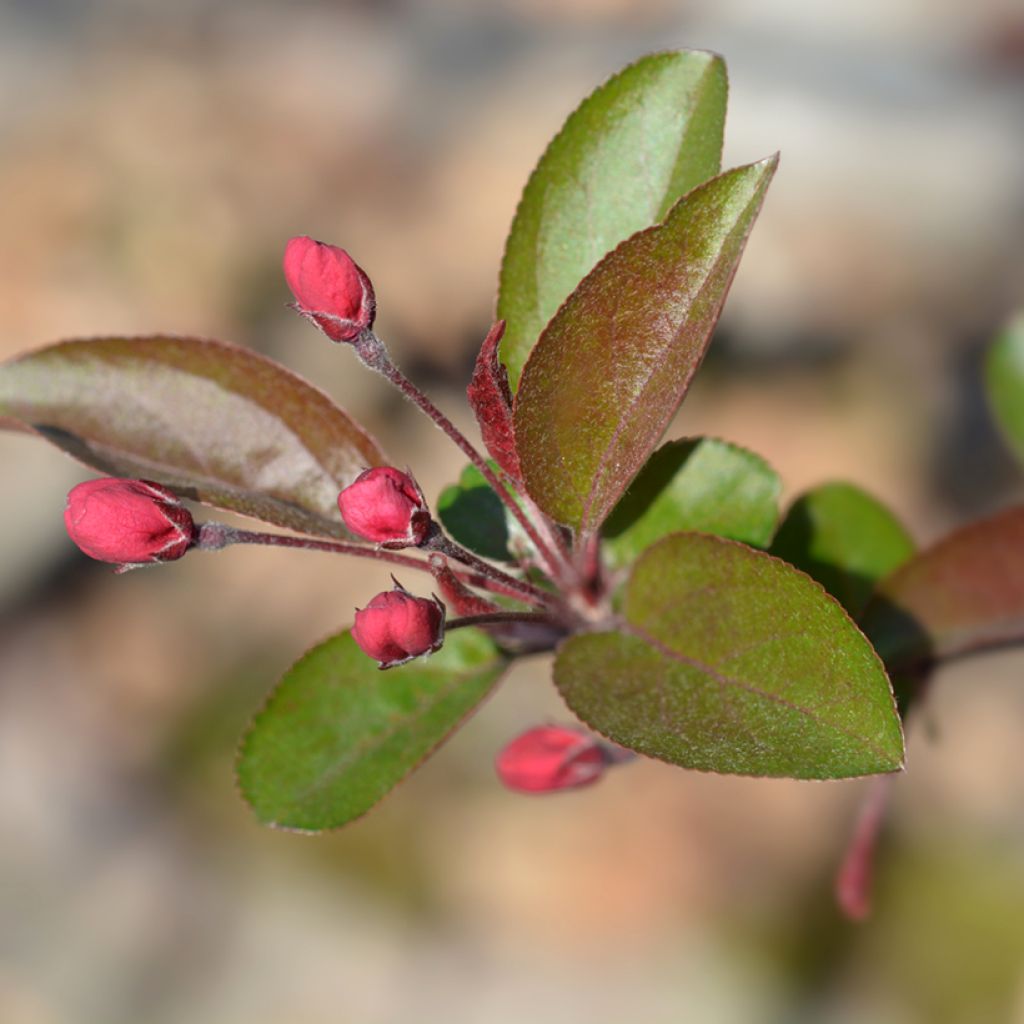

Malus purpurea Eleyi - Purple Crabapple
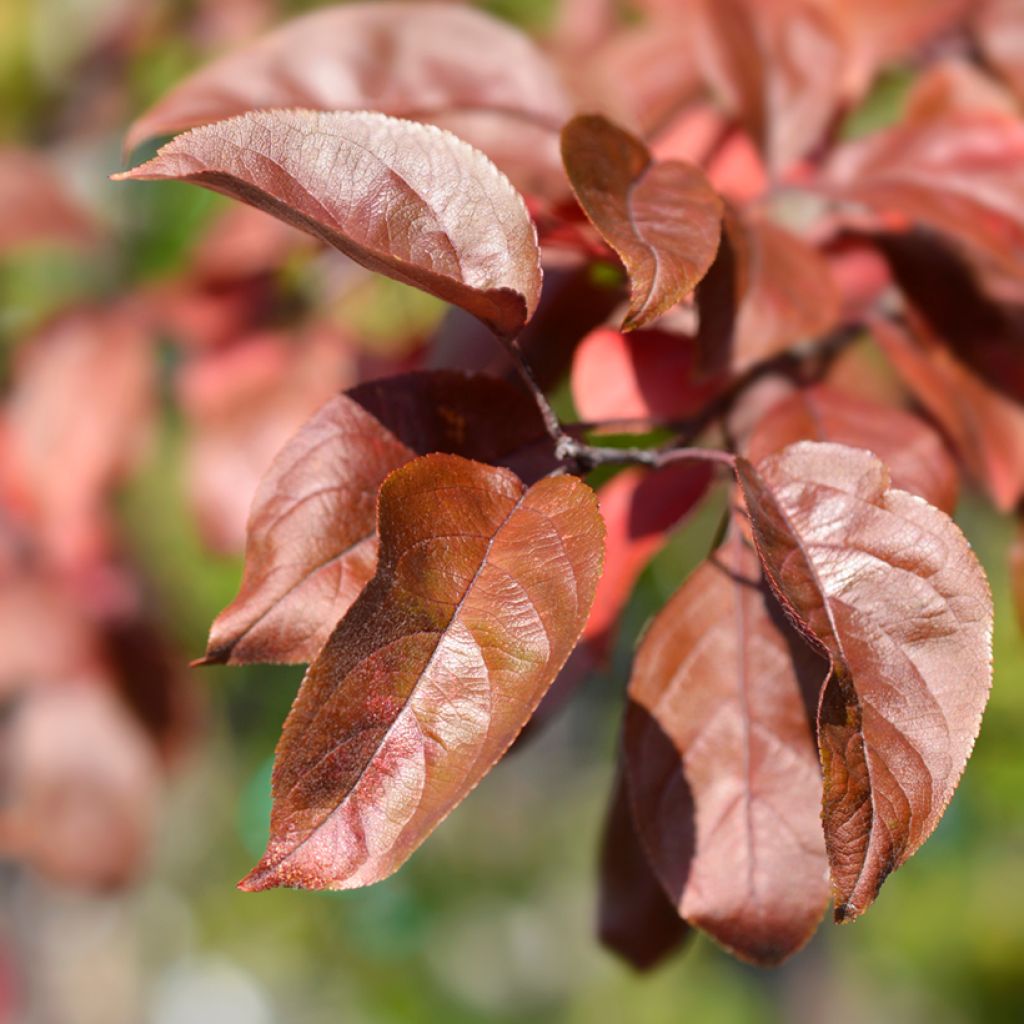

Malus purpurea Eleyi - Purple Crabapple
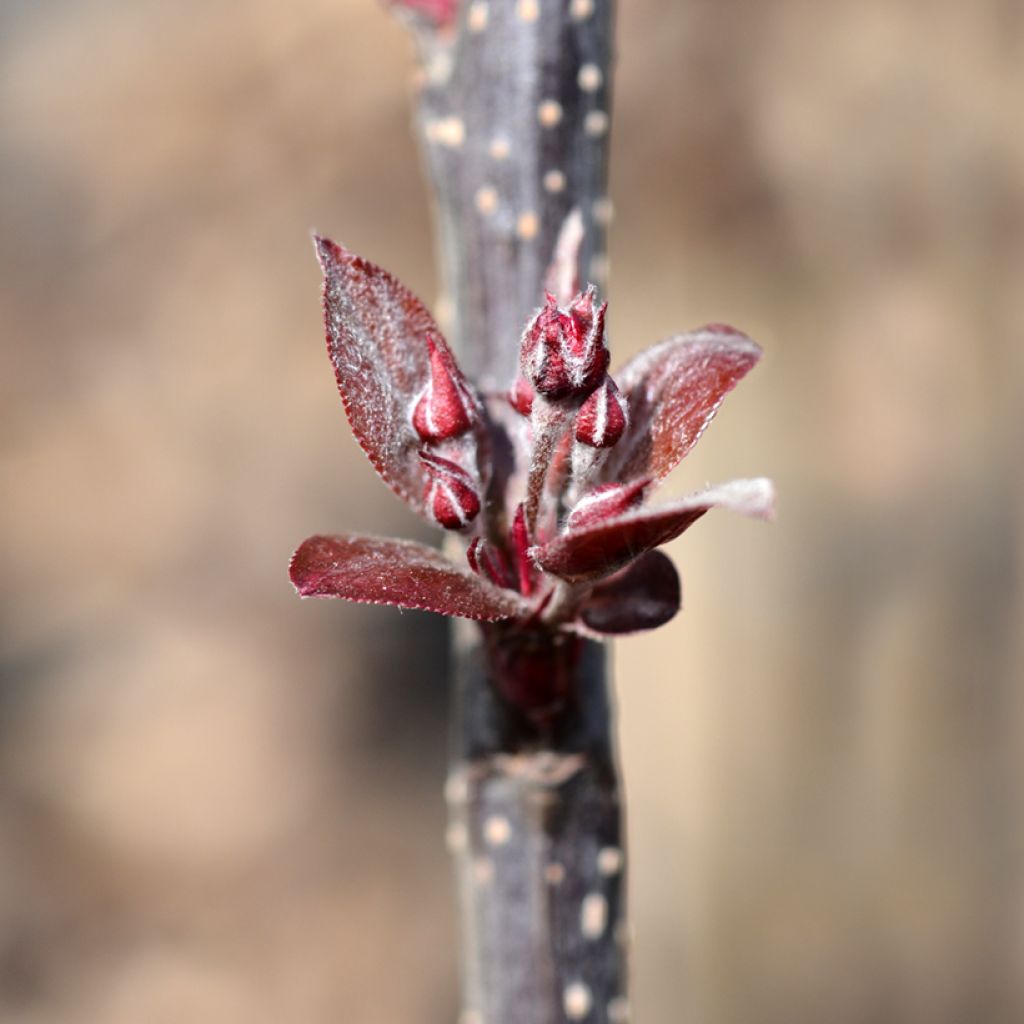

Malus purpurea Eleyi - Purple Crabapple
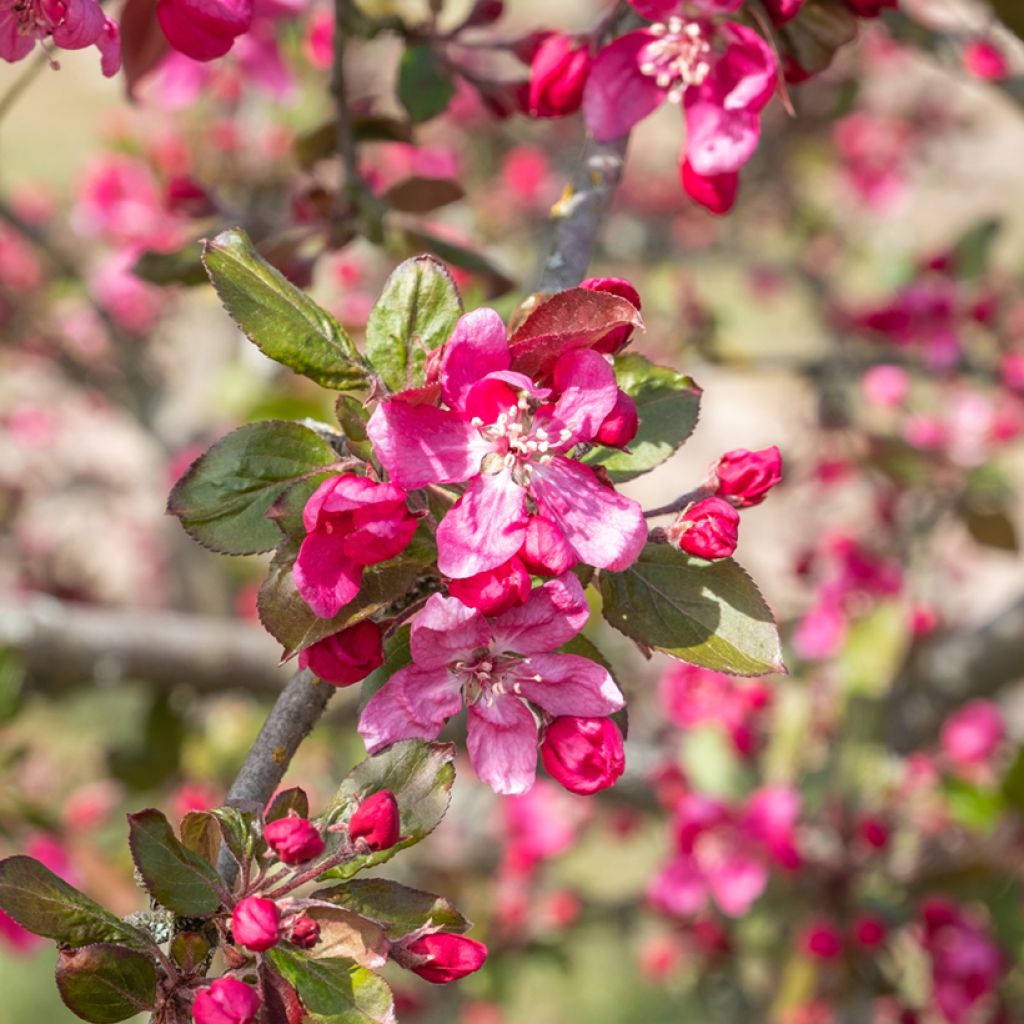

Malus purpurea Eleyi - Purple Crabapple
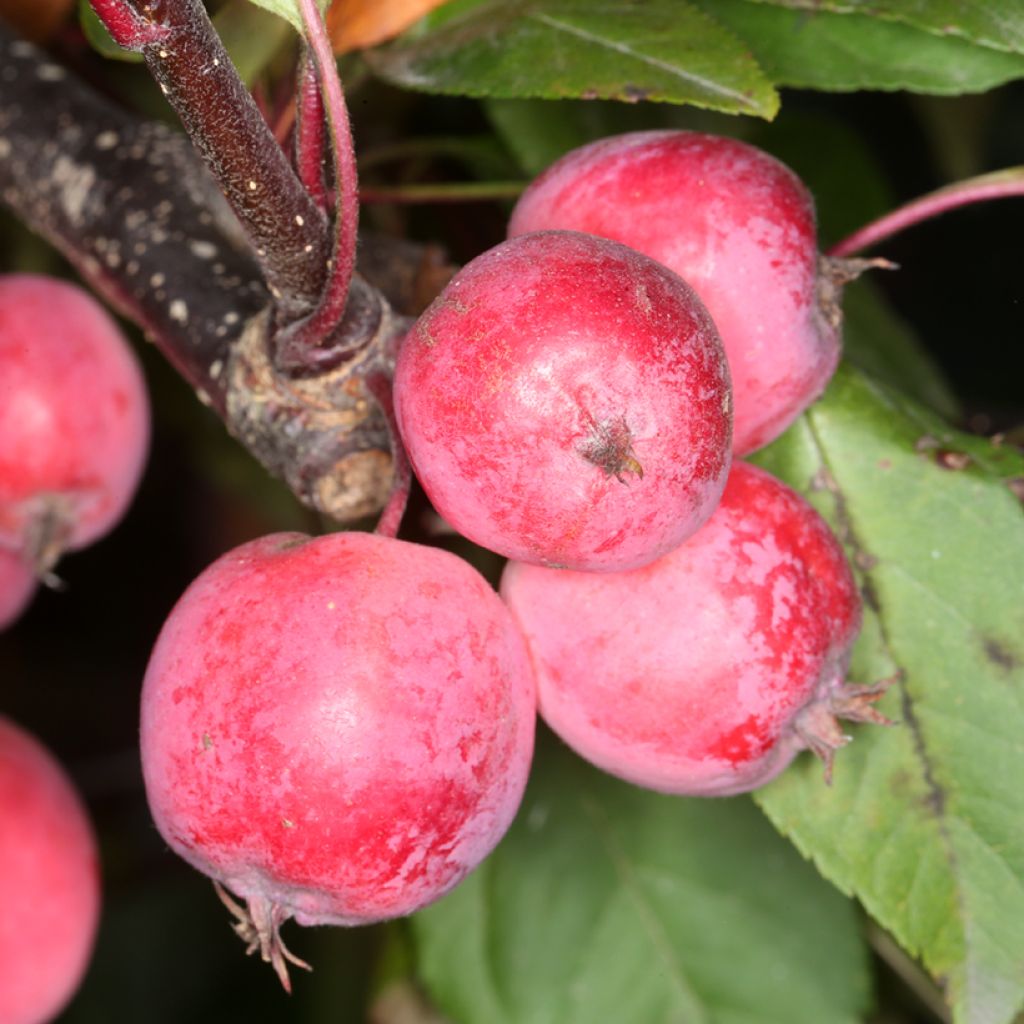

Malus purpurea Eleyi - Purple Crabapple
Malus purpurea Eleyi - Purple Crabapple
Malus x purpurea Eleyi
Purple Crabapple, Purpleleaf Crabapple
This item cannot be shipped to the selected country
Oversize package delivery charge from €6.90
More information
Schedule delivery date,
and select date in basket
This plant carries a 24 months recovery warranty
More information
We guarantee the quality of our plants for a full growing cycle, and will replace at our expense any plant that fails to recover under normal climatic and planting conditions.
Oversize package: home delivery by special carrier from €6.90 per order..
Express home delivery from €8.90.
Does this plant fit my garden?
Set up your Plantfit profile →
Description
Malus x purpurea Eleyi is an old variety of ornamental apple tree still sought after for its ornamental qualities. Its entire vegetation, from flowering to fruiting through its young leaves, offers a range of purple tones. Of medium stature, this particularly decorative variety deserves to be rediscovered despite its susceptibility to scab and, to a lesser extent, gall.
The ornamental apple trees (Malus) come from various botanical species of the genus Malus belonging to the Rosaceae family. Hardy, accommodating, and easy to grow, these Flowering Crabapples thrive in ordinary soil but prefer loamy, deep, loose, and moist soil, as well as sunny exposures. Once established, they tolerate neglect while maintaining their generous character. 'Eleyi' was selected before 1920 by Charles Eley of East Bergholt, Suffolk, United Kingdom.
'Eleyi' is supposed to descend from Malus x purpurea, the purple berry-bearing apple tree. Some specialists believe it is instead the result of a cross between M. sieversii f. niedzwetzskyana and M. toringo. This 'Eleyi' hybrid forms a small tree with a short trunk, supporting a rounded and wide, dense, more or less regular crown. Its growth is moderately fast, and its dimensions will not exceed 6 m in height and 4.50 m in spread. Flowering begins in mid-May, earlier or later depending on the region. It takes the form of numerous single, 3 to 3.5 cm diameter flowers, from wine-red to purple. These flowers, gathered in small clusters, bloom before the young leaves. The flowering is followed by the formation of numerous small ovoid to spherical apples, measuring 2 to 2.5 cm in length, hanging from a long peduncle. At maturity, in October, their colour changes from intense red to purplish violet. These fruits are loved by birds and remain attached to the bush until October. The deciduous foliage is beautifully coloured: the young leaves are purple, then become bronze, remain green bronze until summer, and turn yellow-orange before falling quite late.
Malus 'Eleyi', like many flowering apple trees, is a good pollinator for fruit-bearing apple trees. This moderately growing tree is attractive from spring to autumn. It will find a place in medium-sized gardens, as a solitary specimen or in an informal hedge with hawthorns, lilacs, or saskatoon juneberries. When space is available, ornamental apple trees, planted in alignment on a slope bordering a sunken alley, create a rather magical scene in spring and autumn, due to their often sumptuous colours at the end of the season.
Report an error about the product description
Plant habit
Flowering
Foliage
Botanical data
Malus
x purpurea
Eleyi
Rosaceae
Purple Crabapple, Purpleleaf Crabapple
Malus × purpurea 'Eleyi', Malus × eleyi
Cultivar or hybrid
Other Malus - Crabapple
Planting and care
Fairly easy to grow in deep and loose soil (slightly acidic to slightly chalky), Malus 'Eleyi' requires a bright, sunny and open exposure. Ornamental Malus trees are generally very accommodating, but they like fertile, moist and deep soils. After careful planting and installation accompanied by regular watering during the first two years, they manage on their own. Plant your apple tree in the sun or partial shade, giving it room to spread. Dig a large planting hole. If the soil is poor, add compost to the planting soil and apply fertiliser or compost at its base every spring. To prevent diseases, treat with Bordeaux mixture in spring.
Planting period
Intended location
Care
This item has not been reviewed yet - be the first to leave a review about it.
Haven't found what you were looking for?
Hardiness is the lowest winter temperature a plant can endure without suffering serious damage or even dying. However, hardiness is affected by location (a sheltered area, such as a patio), protection (winter cover) and soil type (hardiness is improved by well-drained soil).

Photo Sharing Terms & Conditions
In order to encourage gardeners to interact and share their experiences, Promesse de fleurs offers various media enabling content to be uploaded onto its Site - in particular via the ‘Photo sharing’ module.
The User agrees to refrain from:
- Posting any content that is illegal, prejudicial, insulting, racist, inciteful to hatred, revisionist, contrary to public decency, that infringes on privacy or on the privacy rights of third parties, in particular the publicity rights of persons and goods, intellectual property rights, or the right to privacy.
- Submitting content on behalf of a third party;
- Impersonate the identity of a third party and/or publish any personal information about a third party;
In general, the User undertakes to refrain from any unethical behaviour.
All Content (in particular text, comments, files, images, photos, videos, creative works, etc.), which may be subject to property or intellectual property rights, image or other private rights, shall remain the property of the User, subject to the limited rights granted by the terms of the licence granted by Promesse de fleurs as stated below. Users are at liberty to publish or not to publish such Content on the Site, notably via the ‘Photo Sharing’ facility, and accept that this Content shall be made public and freely accessible, notably on the Internet.
Users further acknowledge, undertake to have ,and guarantee that they hold all necessary rights and permissions to publish such material on the Site, in particular with regard to the legislation in force pertaining to any privacy, property, intellectual property, image, or contractual rights, or rights of any other nature. By publishing such Content on the Site, Users acknowledge accepting full liability as publishers of the Content within the meaning of the law, and grant Promesse de fleurs, free of charge, an inclusive, worldwide licence for the said Content for the entire duration of its publication, including all reproduction, representation, up/downloading, displaying, performing, transmission, and storage rights.
Users also grant permission for their name to be linked to the Content and accept that this link may not always be made available.
By engaging in posting material, Users consent to their Content becoming automatically accessible on the Internet, in particular on other sites and/or blogs and/or web pages of the Promesse de fleurs site, including in particular social pages and the Promesse de fleurs catalogue.
Users may secure the removal of entrusted content free of charge by issuing a simple request via our contact form.
The flowering period indicated on our website applies to countries and regions located in USDA zone 8 (France, the United Kingdom, Ireland, the Netherlands, etc.)
It will vary according to where you live:
- In zones 9 to 10 (Italy, Spain, Greece, etc.), flowering will occur about 2 to 4 weeks earlier.
- In zones 6 to 7 (Germany, Poland, Slovenia, and lower mountainous regions), flowering will be delayed by 2 to 3 weeks.
- In zone 5 (Central Europe, Scandinavia), blooming will be delayed by 3 to 5 weeks.
In temperate climates, pruning of spring-flowering shrubs (forsythia, spireas, etc.) should be done just after flowering.
Pruning of summer-flowering shrubs (Indian Lilac, Perovskia, etc.) can be done in winter or spring.
In cold regions as well as with frost-sensitive plants, avoid pruning too early when severe frosts may still occur.
The planting period indicated on our website applies to countries and regions located in USDA zone 8 (France, United Kingdom, Ireland, Netherlands).
It will vary according to where you live:
- In Mediterranean zones (Marseille, Madrid, Milan, etc.), autumn and winter are the best planting periods.
- In continental zones (Strasbourg, Munich, Vienna, etc.), delay planting by 2 to 3 weeks in spring and bring it forward by 2 to 4 weeks in autumn.
- In mountainous regions (the Alps, Pyrenees, Carpathians, etc.), it is best to plant in late spring (May-June) or late summer (August-September).
The harvesting period indicated on our website applies to countries and regions in USDA zone 8 (France, England, Ireland, the Netherlands).
In colder areas (Scandinavia, Poland, Austria...) fruit and vegetable harvests are likely to be delayed by 3-4 weeks.
In warmer areas (Italy, Spain, Greece, etc.), harvesting will probably take place earlier, depending on weather conditions.
The sowing periods indicated on our website apply to countries and regions within USDA Zone 8 (France, UK, Ireland, Netherlands).
In colder areas (Scandinavia, Poland, Austria...), delay any outdoor sowing by 3-4 weeks, or sow under glass.
In warmer climes (Italy, Spain, Greece, etc.), bring outdoor sowing forward by a few weeks.

































